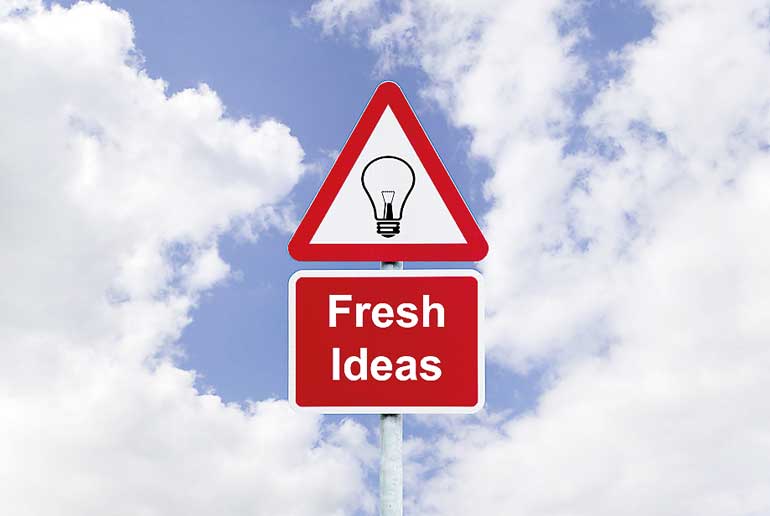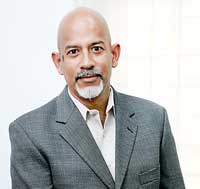Sunday Apr 20, 2025
Sunday Apr 20, 2025
Friday, 23 October 2015 00:00 - - {{hitsCtrl.values.hits}}


By Kavan Weerasinghe
Definition
Millennial dynamism according to the author is a state of savvy adaptation and use of technology by a generation of younger individuals. This article outlines why businesses should embrace the same mindset and actions of these technology savvy individuals. Why business leaders should capture and transition technology used in a living room, into the office room.
Most business leaders in influential positions are ‘digital migrants’ – they grew up outside of the digital world and are of the pre-internet age. Those in this category migrated to the digital age later, mostly out of necessity. Tech savvy millennials on the other hand, those mostly in the lower and middle ranks of organisations now, are digital natives. They were born into a digital world.
Hence if you are a migrant, you need to make a conscious effort to harness the mindset and actions of the natives. You need to direct and guide your respective organisations towards a nimble millennial mindset if you want to stay relevant. Here are some reasons why.
Millennials freely use Instagram, SnapChat, WhatsApp, Viber, Twitter, Instagram, Uber (or Pickme) and Google Drive to fulfil their individual day to day communication, transportation, photo storage and other needs. All of these tools provide a rich user/customer experience. All of this via the ubiquitous mobile phone that is dependable, portable, connected, and relatively cost effective. Businesses on the other hand use tools that were essentially created by organisations that are no longer leaders nor innovators. Hence businesses might not have access to dependable, portable, connected and cost effective technology that have a rich user/customer experience.
Been there, done that
Most businesses are somehow unable or unwilling to adopt a dynamic mindset nor the enabling technologies for various reasons. Some organisations may from time to time incorporate a few tools, mostly as a knee jerk reaction, and even in those instances do not do so from an organisation wide perspective. Apart from not adopting, some organisations actively rollout barriers to having enabling technologies available to themselves, their staff, and even to their clients.
Most systems and processes organisations adopt are based on older models. For example, fat-client, client-server, mega data-centre based systems procured from vendors who are no longer on the cutting edge of business focused technologies. Furthermore, after implementing these vintage technologies, they find their organisation far from agile, saddled with minor, incremental benefits rather than the transformational outcomes hoped for.
To illustrate the crux of this article – say you are a manufacturer, and you make, maintain and move products. Your margins are getting smaller, pressured into reducing time-to-market, challenged by customers looking for more options, unable to find robust ways to improve manufacturing and supply chains. The vintage aka legacy systems and related processes at your disposal will not be able to satisfy this current business reality nor be able to meet the challenges of the next.
How do you stay alive for starters, and then get ahead at some point on your road map? What business tools and enabling services can you embrace in order to dynamically design, develop, share and collaborate with your team, partners, and clients to be the chosen manufacturer going forward? Do you use WhatsApp or Yammer across the organisation to communicate with your team dynamically or do you still pick up the phone, send multiple emails back and forth in endless cycles to communicate?
Do you use Skype to show a prototype to your partners and clients to get instance feedback before you ship it and find that it does not meet their need? Do you spend an entire afternoon in a stuffy meeting room or do you use Google Hangouts to share and shape a new concept or product? Do you have a mobile app that enables your staff to access, collaborate and communicate with each other and/or your client? Do you offer a mobile app directly to your client so both you and the client can seamlessly connect and trade?
And if you are a service provider, do you offer the traditional phone and website approach for your customers to reach you? Or do you give them several of the above mentioned options to communicate with you including a constellation of mobile based applications to render your services anytime, anywhere? Do you offer Google Wallet or Apple Pay so clients can make a virtual payment, tie-in with a third party cloud-based delivery system to convey your services?
Or do you still make the client call you or come to your office, use traditional sales people, possibly use a central location to render services? Are your days getting longer because you and your teams are tethered to a PC or a laptop? Can you sustain the 24 x7 on-demand world without having everyone on your team on a smartphone and/or a tablet computer? Why not roll out a preconfigured tablet with your product ordering or tracking system embedded, providing it to your trading partners and clients?
Moreover if you are a retailer, do you have your customers go to a traditional website and click checkboxes, make them navigate through several checkout pages? Or can you offer via the cloud an app that shows all your products where they can scroll and/or flip through via an interactive menu, possibly enable them to only use their thumb and forefinger to move and select multiple products, and pay via a linkup with an online bank account? Why not combine your millennial shoppers’ unquenchable thirst to play online games? Do so by incorporating a gamified online shopping experience where they can play a game and have a chance of winning perks, all the while making purchases from your business?
Trading in the future
Keep in mind that dynamic features and services available via mobile apps and other emerging communication tools including smart watches, those specifically targeted at millennials keep increasing at a faster pace than those being produced by old world businesses solely for organisations. Individual consumers are flocking to dynamic technologies, abandoning the traditional approaches. Your customers want an experience; they want to be connected in more ways to you and those who source your products.
Your customers of the future, significant numbers of them will be millennials and younger. Their willingness to trade with you will depend on whether you are able to engage with them in multi-dimensional ways. Ask yourself whether your business can meet these new customers and trade with them in a technology driven world of online, real-time, and experience rich landscape.
Nirvana or extinct
There is a reason almost 50% of the Fortune 500 corporations that existed in the year 2000 are no longer on that list today- they are gone, as most of them were not dynamic in adopting and incorporating new ways of doing business. They did not see beyond their office walls. They did not pay attention to their customers, partners and a creative generation.
It is not too late to adopt Millennial Dynamism. Make the decision needed to change the organisational psyche to think Millennial. Infuse the behaviour of the Millennial into your organisational thinking at every strategy meeting. Guide and demand a strategy to move these technologies into your day to day business enablement technologies. Most tools and ideas out there do not require mega investments; neither do they need to be invented from scratch, or modified. Identify the technologies that are being used by digital natives for their private use. Make the leap by pushing these tools and technologies from the living room to the office room.
(The writer has spent over 20 years in the Managed Services space serving major corporations in the US, UK and Sri Lanka. Currently, he is a Vice President at Brandix i3, offering Managed Services to local and overseas clients via the Brandix i3 Managed Services Centre located in Colombo 7. He can be contacted at [email protected].)
Discover Kapruka, the leading online shopping platform in Sri Lanka, where you can conveniently send Gifts and Flowers to your loved ones for any event including Valentine ’s Day. Explore a wide range of popular Shopping Categories on Kapruka, including Toys, Groceries, Electronics, Birthday Cakes, Fruits, Chocolates, Flower Bouquets, Clothing, Watches, Lingerie, Gift Sets and Jewellery. Also if you’re interested in selling with Kapruka, Partner Central by Kapruka is the best solution to start with. Moreover, through Kapruka Global Shop, you can also enjoy the convenience of purchasing products from renowned platforms like Amazon and eBay and have them delivered to Sri Lanka.
Discover Kapruka, the leading online shopping platform in Sri Lanka, where you can conveniently send Gifts and Flowers to your loved ones for any event including Valentine ’s Day. Explore a wide range of popular Shopping Categories on Kapruka, including Toys, Groceries, Electronics, Birthday Cakes, Fruits, Chocolates, Flower Bouquets, Clothing, Watches, Lingerie, Gift Sets and Jewellery. Also if you’re interested in selling with Kapruka, Partner Central by Kapruka is the best solution to start with. Moreover, through Kapruka Global Shop, you can also enjoy the convenience of purchasing products from renowned platforms like Amazon and eBay and have them delivered to Sri Lanka.